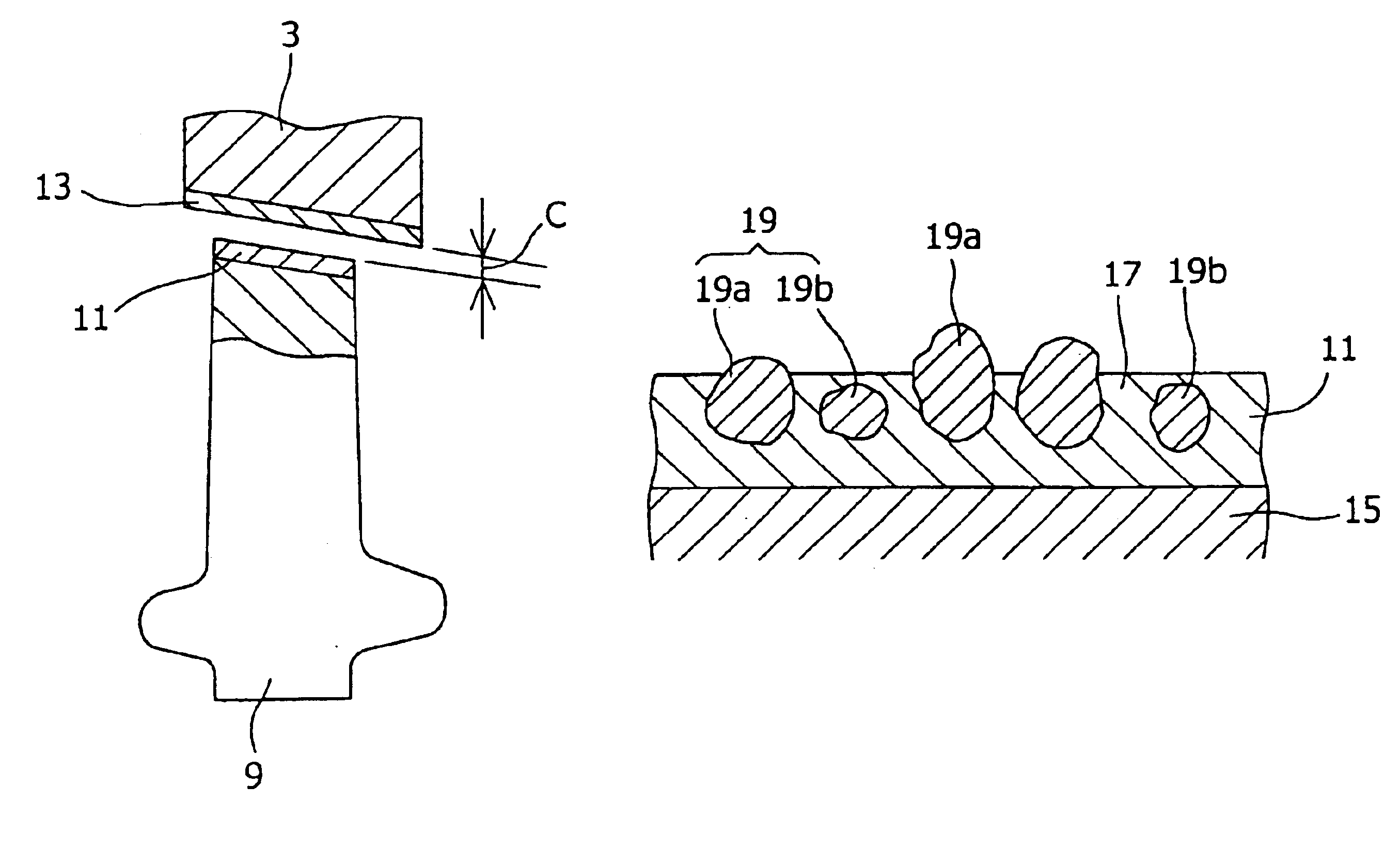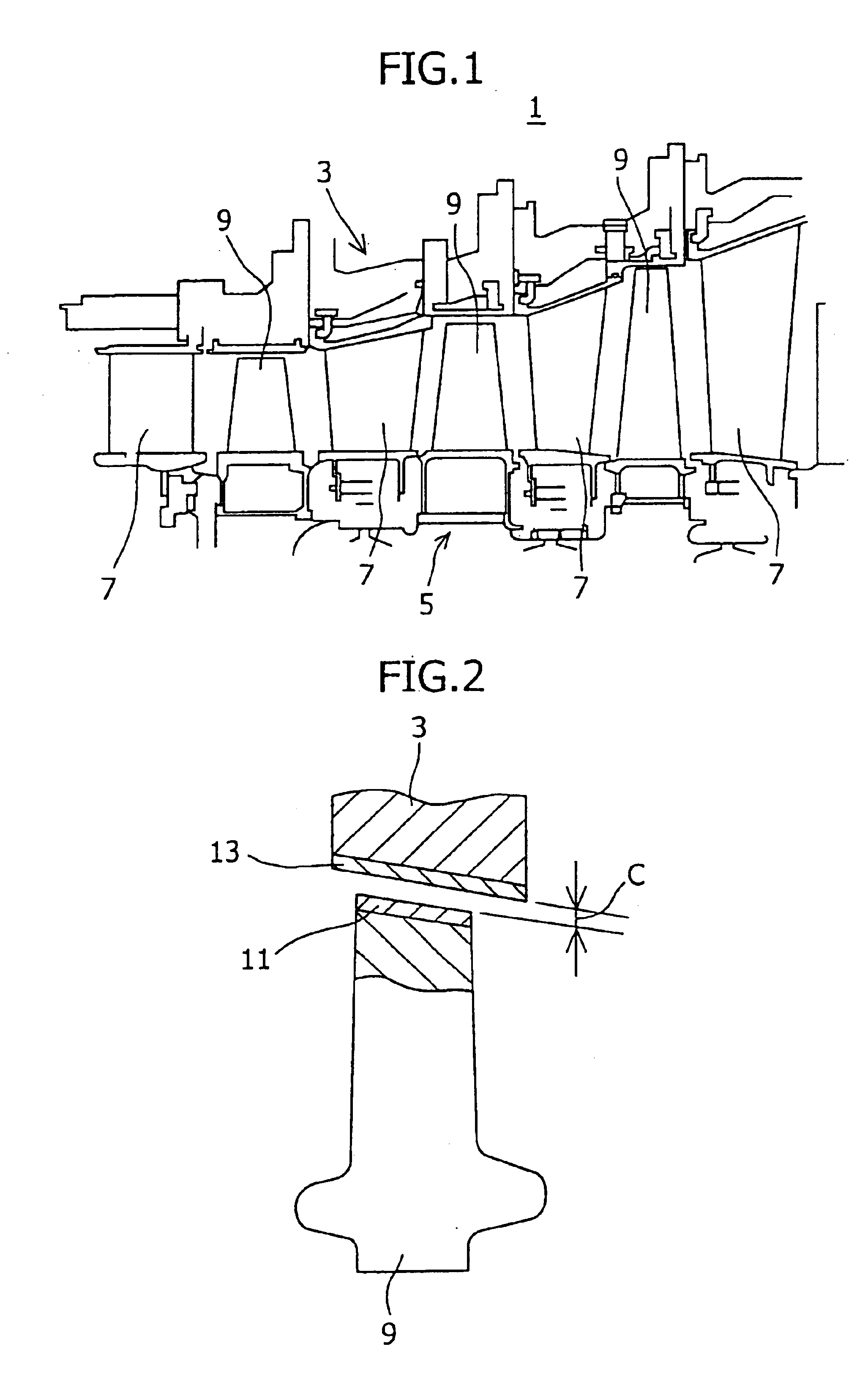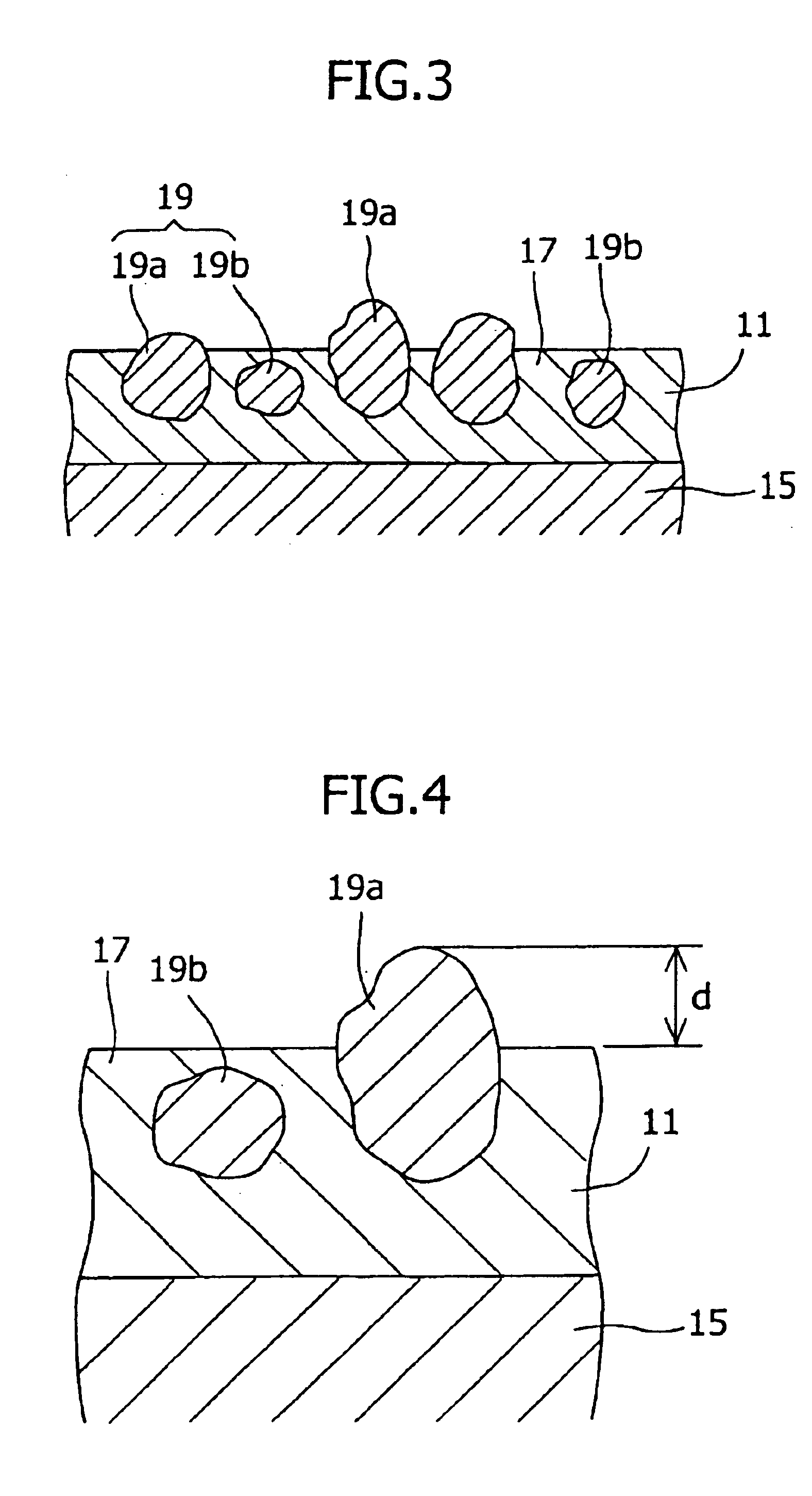Combustion engine, gas turbine, and polishing layer
a combustion engine and gas turbine technology, applied in the direction of machines/engines, climate sustainability, waterborne vessels, etc., can solve the problem of high grinding performance for a long time period
- Summary
- Abstract
- Description
- Claims
- Application Information
AI Technical Summary
Benefits of technology
Problems solved by technology
Method used
Image
Examples
Embodiment Construction
[0025]A combustion engine, a gas turbine, and an abrasive layer in accordance with the present invention will now be described with reference to the accompanying drawings.
[0026]FIG. 1 is a partially sectional view of a turbine portion 1 of a gas turbine in accordance with one embodiment of the present invention, in which the turbine portion 1 is cut in the axial direction.
[0027]This turbine portion 1 includes a shroud 3, a rotor 5, a plurality of stator blades 7, and a plurality of rotor blades 9 planted in the rotor 5. The stator blades 7 and the rotor blades 9 are arranged alternately in the axial direction (right-and-left direction in FIG. 1). Although not shown in the figure, the gas turbine is provided with a compressor and a combustor on the upstream side (that is, the left-hand side) of the turbine portion 1.
[0028]Air is compressed in the compressor, and the compressed air is sent into the combustor. In the combustor, a fuel is mixed with the compressed air, and the fuel-air ...
PUM
| Property | Measurement | Unit |
|---|---|---|
| Temperature | aaaaa | aaaaa |
| Fraction | aaaaa | aaaaa |
| Fraction | aaaaa | aaaaa |
Abstract
Description
Claims
Application Information
 Login to View More
Login to View More - R&D
- Intellectual Property
- Life Sciences
- Materials
- Tech Scout
- Unparalleled Data Quality
- Higher Quality Content
- 60% Fewer Hallucinations
Browse by: Latest US Patents, China's latest patents, Technical Efficacy Thesaurus, Application Domain, Technology Topic, Popular Technical Reports.
© 2025 PatSnap. All rights reserved.Legal|Privacy policy|Modern Slavery Act Transparency Statement|Sitemap|About US| Contact US: help@patsnap.com



